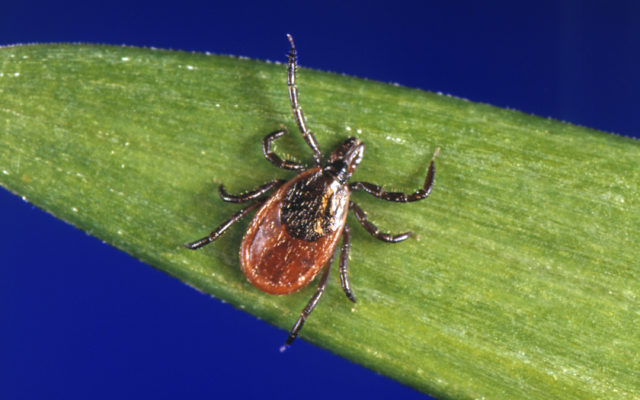
Why Maine experts anticipate a surge in tick samples this year
This spring, tick experts at the University of Maine Tick Lab have noticed a big increase in the number of ticks that the public is submitting for testing. They think this upward trend might be linked to people spending more time outdoors than usual during the COVID-19 pandemic.
It’s too soon to say for sure though. As more data comes in throughout the season, they expect to have more solid conclusions about what the increase means for ticks in Maine.
“Right now we have a huge portion of the state kind of on lockdown with not a whole lot of options for activities other than going outside,” said Griffin Dill, tick expert with the University of Maine Cooperative Extension and Tick lab. “And we’re certainly seeing a huge increase in the number of samples sent into the lab.”
Year round, the UMaine Tick Lab accepts tick submissions from the public. For free, the lab identifies the species of those ticks. And starting last year, for a fee of $15, the lab will also test deer ticks for the pathogens that cause three dangerous diseases: Lyme disease, babesiosis and anaplasmosis.
So far this year, the lab has received 780 ticks for testing, Dill said. Last year, they didn’t reach that number until June 10.
In addition to people potentially spending more time outside due to the statewide shutdown, there are other factors that may be contributing to the increase in tick samples, Dill said. In March, Maine experienced bouts of warm temperatures, and overwintering deer ticks only need above freezing temperatures to become active.
“Even before the COVID-19 situation, we noticed the samples arriving at the lab just never stopped for the winter,” he said. “We were receiving a slow trickle of samples through January and February, and once we hit March, we started to get some of those warm days and numbers began to increase.”
Also, an increase in deer tick numbers could be contributing to the increase in lab samples. Over the past few decades, deer ticks have gradually expanded their range throughout Maine, starting in the south and expanding along the coastline, then moving inland. Today, deer ticks can be found in all 12 states, and their populations are growing.
In addition, more Maine people may be learning about the UMaine Tick Lab, which would result in more people sending in samples.
Usually, tick submissions come from a person who is bitten by a tick and worried it might carry a disease. People also sometimes send in the ticks that bite their pets.
A part of the submission process includes filling out a survey, which helps tick experts gain a better understanding about how and where people are encountering ticks throughout Maine.
“We’ve actually added some questions to our [tick] submission survey to try to understand if people are spending more time outdoors because of COVID-19,” Dill said, “ and at a cursory glance, people are indicating spending more time outdoors.”,” Dill said.
The surveys also revealed that a majority of the people who’ve sent ticks into the lab are picking up ticks right at home, while doing yardwork or gardening. And many of them aren’t taking any measures to protect themselves.
“We noticed a really significant number of people who submitted ticks so far this year have not taken any personal protection,” Dill said. “So we’re just trying to get out there the importance of using repellents and covering up, creating a barrier of clothing. It really is critical, and it’s something that really hasn’t sunken in for a lot of people.”
Tick experts are also concerned that some people may not seek proper medical attention for tick bites, especially during a global pandemic.
“It’s tricky because COVID-19 has changed the way people do things,” said Sara Robinson, director of the Maine Center for Disease Control and Prevention’s Infectious Disease Epidemiology Program. “Not as many people are seeing routine medical care right now, but we think more people are outside, so there’s more potential for people being exposed.”
If you start to experience flu-like symptoms, which are the early symptoms of Lyme disease, anaplasmosis and babesiosis, Robinson recommends you call your medical provider for a consult.
“We don’t want people to wait a long time,” she said. “It just makes treatment more complicated if you’ve had the bacteria in your system longer.”